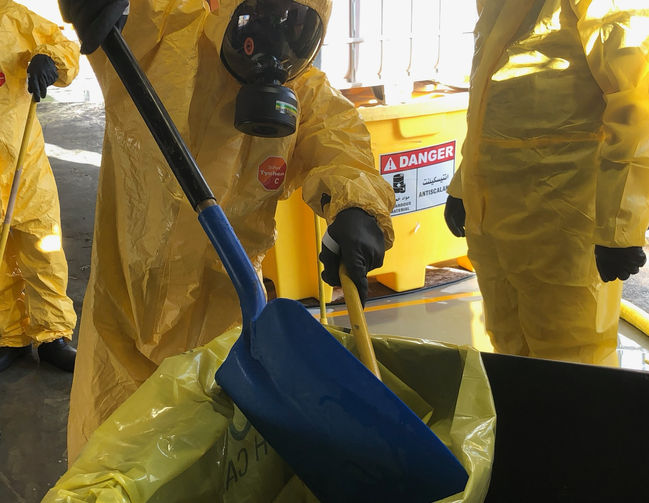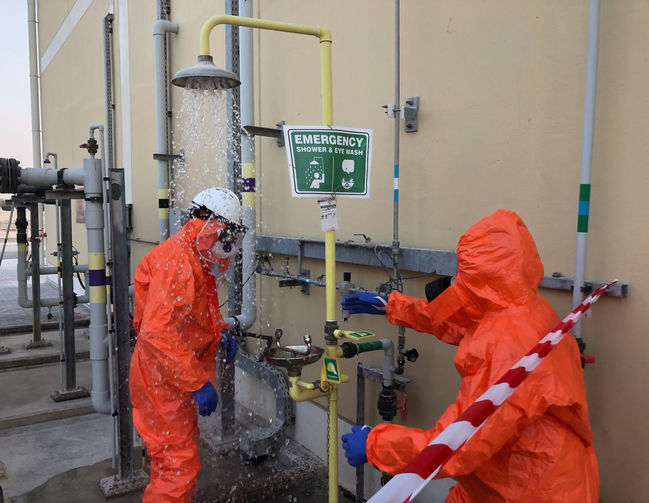

Hazardous chemical handling
Are your workers involved in chemical handling or could be exposed to hazardous material during their job?
CAUTION: As per any workplace regulations the employee is
legally not allowed to work with chemical hazards without
certified training and ensuring staff training is valid and has not
expired.

PROGRAM
• Overview of OSHA and Global Harmonized System requirements in
Hazard Communication Standard.
• Hazardous materials present in the workplace.
• Any operations in the workplace where hazardous chemicals are used.
• Written and documented hazard communication plan.
• Explanation of any special labeling in the workplace.
- What are pictograms?
- What are the signal words?
- What are the hazard statements?
- What are the precautionary statements?
• How to understand and use information on labels and in Safety
Data Sheets.
• Physical and health hazards of the chemicals in use.
• Methods used to detect the presence or release of
hazardous chemicals in the work area. Measurement
with a gas detector.
• PEL - Short Time Exposure Limit (STEL) - Time
Weighted Average (TWA).
• How to prevent or reduce exposure to these
chemicals.
• How to use and control personal protective
equipment.
• Golden rule for safety storage.
Emergency procedure in case of spillage, use of spillage kit
On site practise full scale scenario
Live practise secured scenario:
Caustic soda handling, Sulfuric acid loading/unloading,
Hydrogen fluoride exposure. IBC unloading, dismantling a
chemical pump, use of a chemical transfer pump.
At the end of this course, participants should be able to:
• Describe the different material families used on their site and their consequence on safety and
health.
• State different ways to find information about chemicals found on their site.
• Describe several methods to control chemical exposures and rank them for greater worker
protection.
• Know the emergency response in case of a chemical incident and chemical spillage.


















